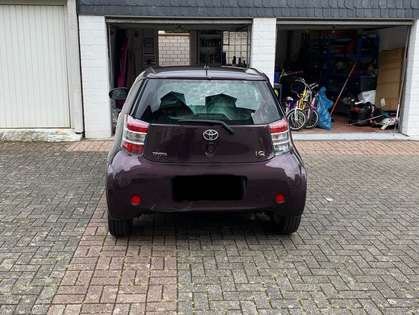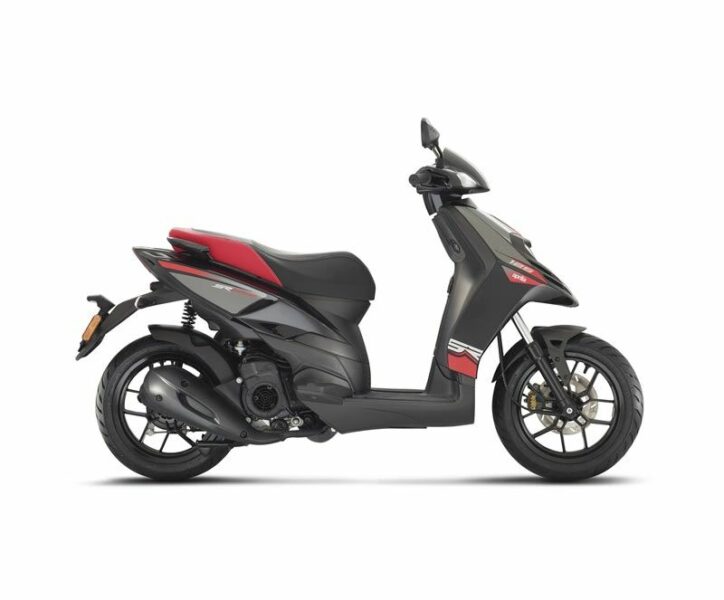
Toyota IQ? 1.33 VVT-i (72 kW) Multidrive
The smallest Toyota is equipped with a 1-liter engine, which is also used by Auris, Yaris and Urban Cruiser, so there is no need to talk about malnutrition. The most powerful gasoline engine iQ has a decent 33 "horsepower".
The driving experience is therefore not disappointingThe iQ 1.33 follows the hustle and bustle of the city more than easily and can also dictate thanks to its flexibility and ingenuity (it needs a little space to change lanes safely). On the open road and on motorways, engine power matches the chassis structure and torsional strength of the body, eliminating unpleasant lean, lateral wind sensitivity or instability when braking. IQ doesn't know that.
Reaches maximum speed without hesitation Driving at 130 km/h is a matter of course. How to drive a bigger car. Factory acceleration from 0 to 100 km / h is 11 seconds (Multidrive), which confirms our opinion that this little Toyota is just jittery.
Our tester was equipped with a continuously variable transmission. multi-drive, which, in addition to the classic programs P (parking), D (forward), R (reverse), N (neutral), also has a program B (for engine braking when driving downhill) and S, which is a more dynamic lateral automatic.
The Multidrive (surcharge of € 1.200) demonstrates ease of use and adds its share of the drivetrain. This is felt by the louder operation of the engine or by its increased noise.
In the lower and lower mid-range, the 1-liter engine and its exhaust are completely unobtrusive, and in the upper half of the rotational range, the noise increases so much that at long distances it is no longer pleasant. If only I gave a slightly more sporty tone, but unfortunately not.
Lightly depressing the accelerator pedal, when Eco light is also on for economical driving, the Multidrive stays between 1.000 and 2.000 rpm, with a more dynamic one around 4.000 rpm, and with a very heavy right hand it embraces the red field towers over six by the thousands.
Program S, in which Toyota somehow avoids the word Sport, increases the engine speed from about 1.000 to 2.000 by moving the gear lever to the left (if you have previously driven at, say, 2.000 rpm in normal mode, program S also increases the speed to 4.000 rpm), which further increases the noise, but also increases the reaction speed and, of course, fuel consumption.
About a ton is hard equipped and motorized in such a way, which is undoubtedly a surprise, but given the quality construction and innovation introduced in this kid with the soul of a big car, a little more weight is expected.
Load capacity is iQ's weak point, since it weighs less than 300 kg, which, in principle, should not cause any problems, but it is easy to "weigh" a baby with three 100 kg adults and one piece of luggage. And we have already crossed the border.
However, despite the four-seater design (it can actually be ridden by three adults of average height), the iQ is likely to rarely carry such combinations.
Return to consumption, which rewarded us with an average fuel consumption of 6 liters per 1 kilometer, and after the chase, the calculation of thirst showed an average consumption of 100 liters, which is undoubtedly a very interesting fact.
Compared to a good six-speed manual transmission, the Multidrive contributes to an increase in consumption of several deciliters, which is already visible from the factory consumption data (compared to a 1.33 manual transmission, i0 with continuously variable iQ increases by 2 - 0 liters). 4 km), and with a more lively ride, of course, the thirst increases.
But the cost history is endless. Also in this iQ, we got acquainted with the inaccurate fuel gauge in the 32-liter fuel tank, which is mounted on the bottom of this car. When we turned on the emergency light, we went to the gas station, refueled and, in the end, we were surprised to find that there were between eight and nine liters of fuel left in the little girl.
With a modest container volume, which cuts down on long journeys with frequent treats, that's a pretty high percentage.
IQ with manual transmission also have a built-in start-stop method, which helps to save a few deciliters. The price of the iQ is also high, especially if it has the same amount of hardware as the test one. The benefits of choosing the best equipment are also reflected in ease of use.
IQ, however, is excellent not only in terms of practicality. city agility test (short turning radius is a real balm) and easy parking (the view behind the seat due to the proximity of the rear window helps with centimeter-accurate parking), but it also turns out to be a car that is easy to live with.
The test car did not have a classic key, so it was unlocked without pressing a button, and the engine was started and stopped in a non-classical manner as well. Lightness complements even more Transmission, which switches itself, the only pity is that it does not allow manual switching.
Driving position with only the height-adjustable ring and the non-height-adjustable seat, it takes a little getting used to, but the front seats are great. Tight, with good enough lateral grip on the upper body that does not fatigue even after a long ride.
Remember the previous iQ test where we scolded the audio control solution? This iQ was poorly equipped, so it only had control buttons on the steering wheel, which meant that only the driver could control the radio.
Well, this time around, the iQ had a built-in navigation audio system (at an additional cost of 1.370 euros), which also offered classic buttons for the audio system, a USB interface and Bluetooth for communication with a mobile phone. The navigation works great, it is accurate, the instructions are clear graphically and verbally, and the device calculates routes quickly.
The only problem is the cartography, which does not know all house numbers and does not have some new roads (the last sections of the motorway with the Shentwish tunnel, some local roads that have been in traffic for at least three years ...), but the overall assessment is positive.
Mitya Reven, photo: Sasha Kapetanovich
Toyota IQ? 1.33 VVT-i (72 kW) Multidrive
Basic data
| Sales: | Toyota Adria Ltd. |
|---|---|
| Base model price: | 17.300 € |
| Test model cost: | 21.060 € |
| Calculate the cost of auto insurance | |
| Power: | 72kW (98 KM) |
| Acceleration (0-100 km / h): | 11,6 with |
| Maximum speed: | 170 km / h |
| Mixed flow ECE: | 5,1l / 100km |
Technical information
| engine: | 4-cylinder - 4-stroke - in-line - gasoline - displacement 1.329 cm? – maximum power 72 kW (98 hp) at 6.000 rpm – maximum torque 123 Nm at 4.400 rpm. |
|---|---|
| Energy transfer: | the engine is driven by the front wheels - a continuously variable automatic transmission - with 175/60 R 16 H (Bridgestone B250) tires. |
| Capacity: | 170 km/h top speed - 0-100 km/h acceleration in 11,6 s - fuel consumption (ECE) 6,3/4,4/5,1 l/100 km, CO2 emissions 120 g/km. |
| Mass: | empty vehicle 930 kg - permissible gross weight 1.270 kg. |
| External dimensions: | length 2.985 mm - width 1.680 mm - height 1.500 mm - wheelbase 2.000 mm - fuel tank 32 l. |
| Box: | 32-292 l |
Our measurements
| T = 14 ° C / p = 1.210 mbar / rel. vl. = 33% / Odometer Condition: 3.674 km | |
| Acceleration 0-100km: | 11,8s |
|---|---|
| 402m from the city: | 18,4 years ( 126 km / h) |
| Maximum speed: | 175km / h |
| test consumption: | 8,6 l / 100km |
| Braking distance at 100 km / h: | 43,8m |
| AM table: | 42m |
We praise and reproach
innovation
the shape of the exterior and interior
workmanship
capacity by size
three "adult seats"
maneuverability (very small turning radius)
enriches the main and protective equipment
fuel consumption with moderate driving
high price
fuel consumption during acceleration
installation of the on-board computer button
barrel size
multiple storage spaces
sensitive interior (scratches)
unfriendly to tall drivers (high seating position and insufficient longitudinal seat movement)

